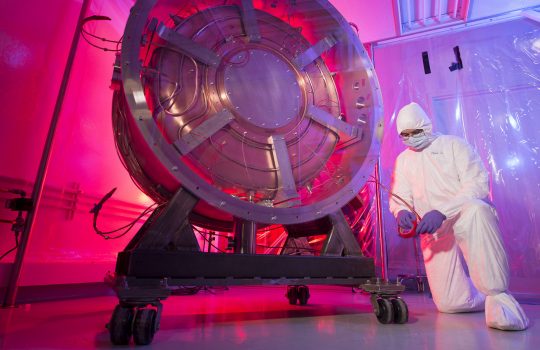New kind of particle collider could reach higher energy at a lower cost
From Inside Science, Feb. 5, 2020: The next generation of particle physics just got a whole lot closer. Scientists at the Muon Ionization Cooling Experiment have developed a revolutionary new process that, for the first time, makes a muon particle collider within reach. Fermilab scientist Vladimir Shiltsev comments on how muon ionization cooling is a linchpin in demonstrating the technical feasibility of muon colliders.


